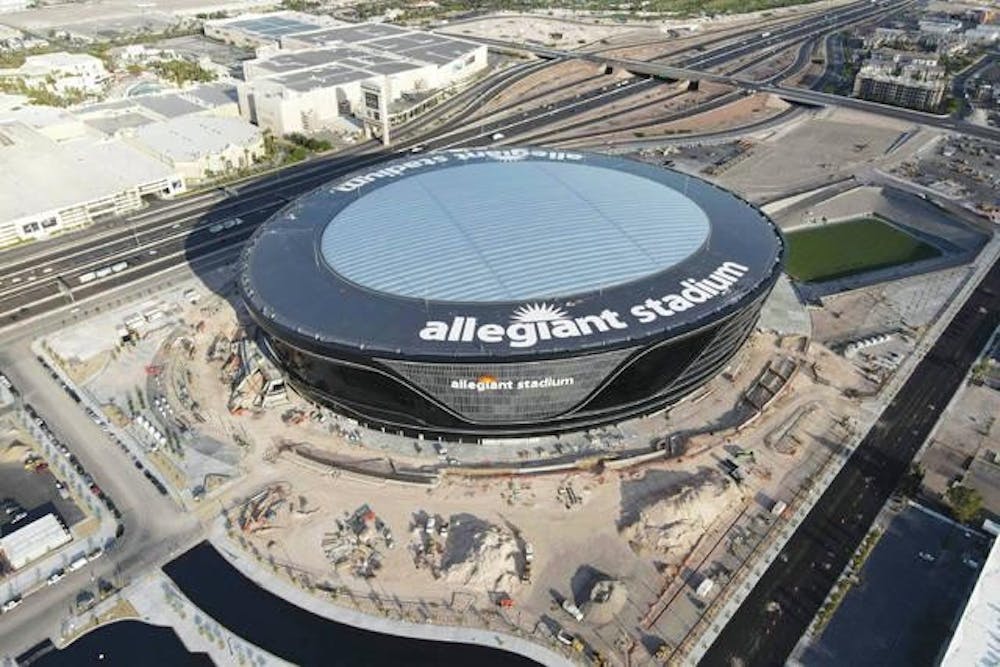It's been over 13 years since Indianapolis’ own Lucas Oil Stadium officially opened to the public. Lucas Oil Stadium serves as a multipurpose stadium, most notably for the Indianapolis Colts. It seats over 67,000 people and is complete with a first of its kind retractable roof and windows.
The home of the Colts is truly a spectacle for Indiana’s capital. The stadium is remarkable, and it only cost a small price of $720 million.
Of that $720 million, the Colts were only responsible for paying $100 million even though the owner of the team, Jim Irsay, is worth about 3.5 billion dollars. Indianapolis and the surrounding areas were left to finance a good portion of the stadium.
New stadiums are breathtaking and often provide a city with a sense of civic pride, but building stadiums using public funds exploits the residents while billionaire owners sit back and watch.
When new stadiums are being built, they negotiate with state and city governments to determine how or if a stadium will be funded. Cities fund their payments through an increase in sales taxes, tourism taxes and bonds.
Judith Grant Long, associate professor of Urban Planning at Harvard University, studied all 121 pro sports stadiums used in 2010. Long said Lucas Oil Stadium required the most public funding. The Colts and the city of Indianapolis still owe $633 million dollars for the stadium as of April 2021.
The process of building a new stadium is rather tedious. The Las Vegas Raiders’ stadium took over three years to finish. Aside from taking a lot of time, construction requires substantial funds, consistently getting more expensive as time goes on.
Lucas Oil Stadium’s $720 million price tag back in 2008 is nothing compared to Allegiant Stadium’s $1.8 billion or SoFi Stadium’s $5 billion cost.
It’s worth noting SoFi Stadium was entirely funded by Las Angeles Rams owner Stan Kroenke.
According to Long, in the 1990s, the average public cost for a new stadium was $142 million. By the end of the 2000s, the average cost rose to $241 million.
The public cost is still climbing. In 2017, the Atlanta Falcons’ new stadium cost residents $700 million. In 2020, the Raiders’ new stadium cost taxpayers $750 million.
These hundred million dollar projects come with costly upkeep responsibilities as well. From 1997 to 2017, there was a 90% replacement rate for U.S. sports stadiums. In those 20 years, there were 101 new facilities and almost all used public funding.
Building a brand new stadium is easy to get sucked into, even if it doesn’t make the most sense.
In Detroit, Mike Ilitch, former owner of the Red Wings, had plans in 2013 for a new hockey stadium even though the city filed for bankruptcy that same year. While Mike Ilitch was worth $6.1 billion in 2017, this new facility ended up costing Detroit residents $324 million.
Stadiums require millions of taxpayer dollars and they generate $145 million in revenue per year on average. However, none of this money goes back into the community.
The revenue from stadiums could potentially help fund education, law enforcement or other community services. Instead, residents are forced to pay for privately-owned stadiums with little benefits to them.
It’s an easy conclusion to reach at first glance — bigger and better stadiums will stimulate the economy and provide jobs.
Most jobs created by the stadium are often temporary jobs, low-paying jobs or result in out-of-state construction hires, doing little to help the local economy.
What happens when cities aren’t willing to support these monstrosities of stadiums?
Well, just ask the city of Oakland.
Oakland was extremely hesitant about using public money to fund a new stadium for the then Oakland Raiders, but when Las Vegas promised $750 million in public funds, the Raiders found themselves a new home.
When San Diego voters decided against renovating the home of the then-San Diego Chargers, the Chargers franchise moved to Los Angeles to play in SoFi Stadium.
Professional sports franchises give a community a sense of unity and can be an escape from divisive politics.
In theory, professional sports franchises are great for cities, but the facilities are heavily reliant on public funding, robbing residents while billionaire owners dangle their wealth over residents’ heads.
Jacob Spudich (he/him) is a freshman studying journalism and political science. He is a DJ for the WIUX student radio station, a member of Hoosier Health Advocates and a huge Detroit Tigers fan.






